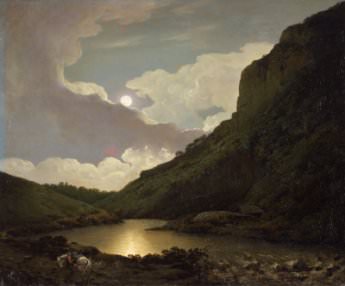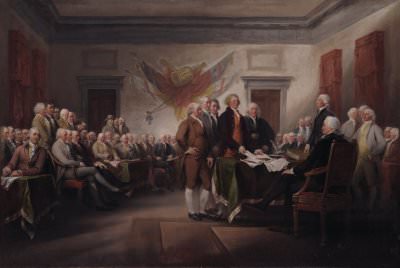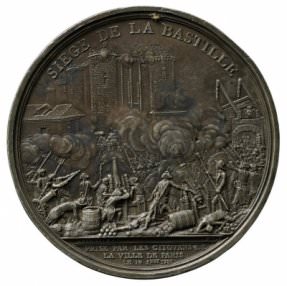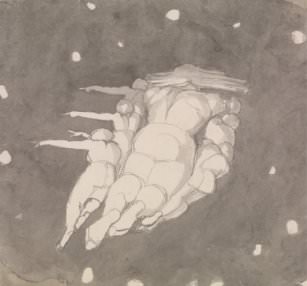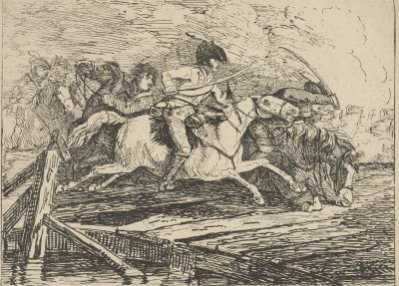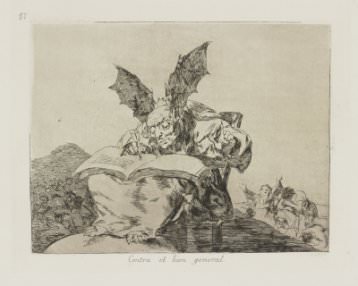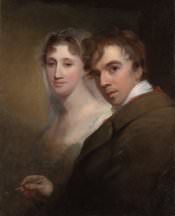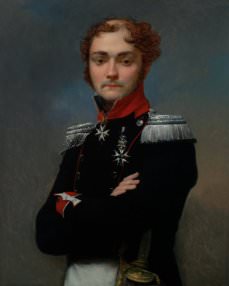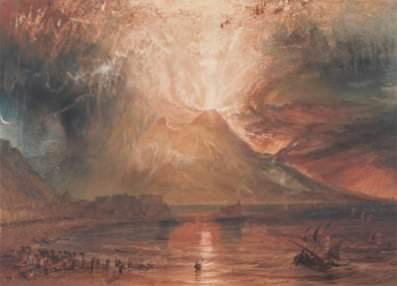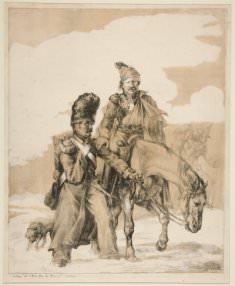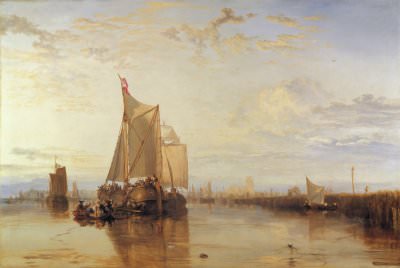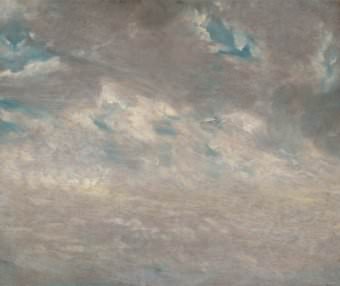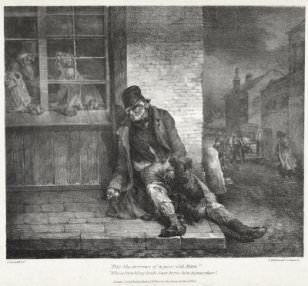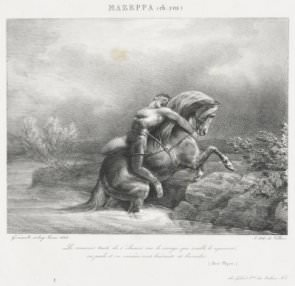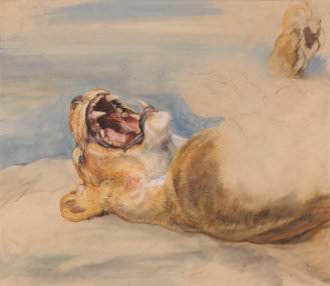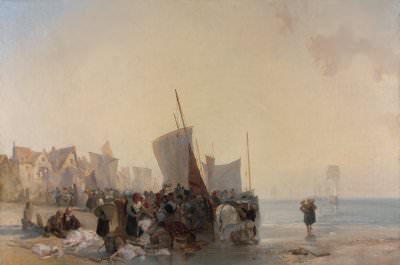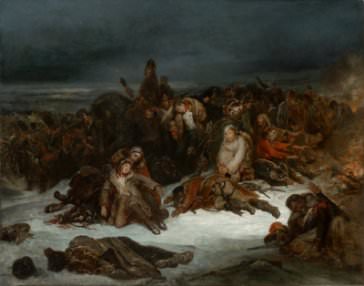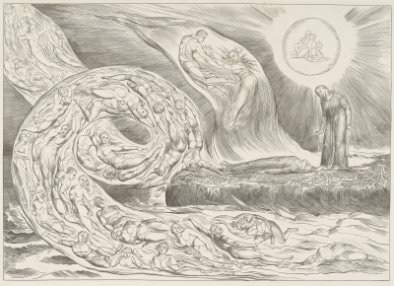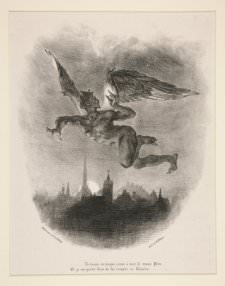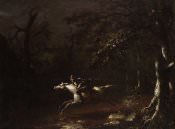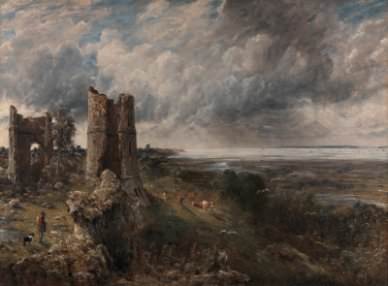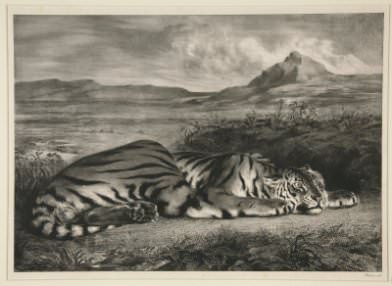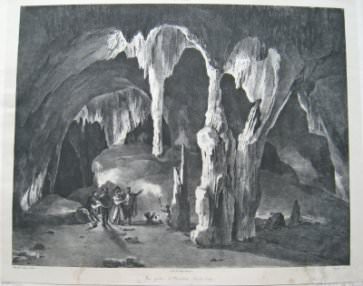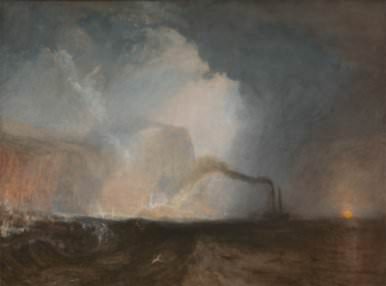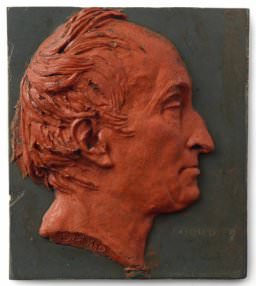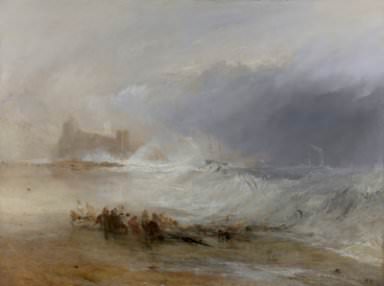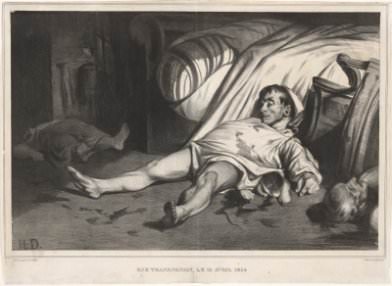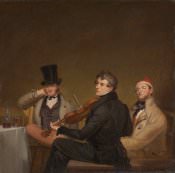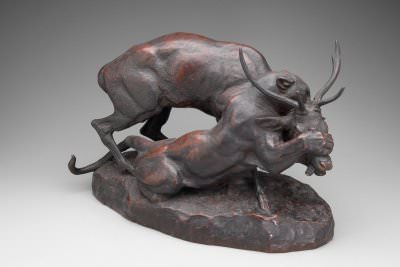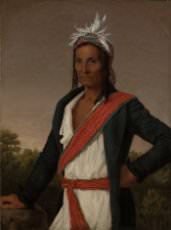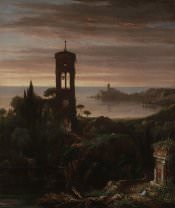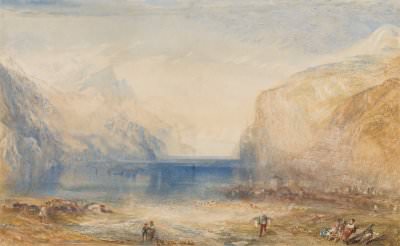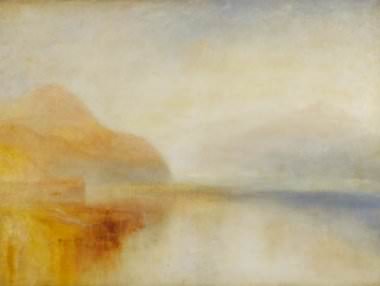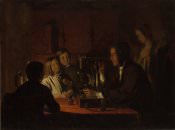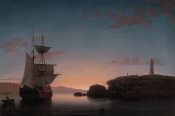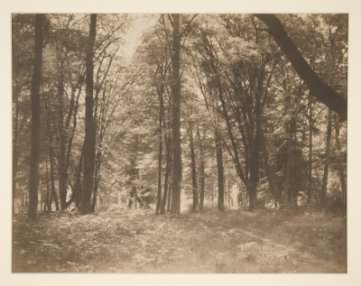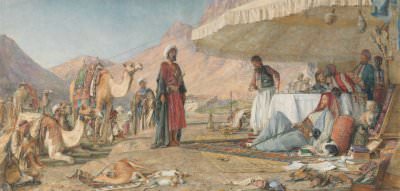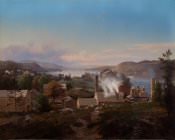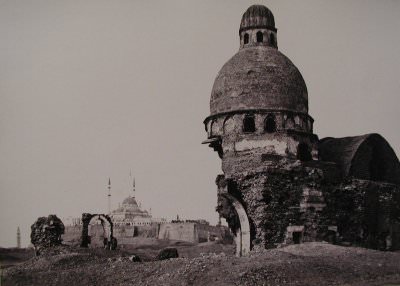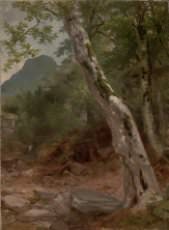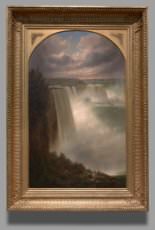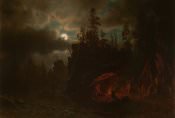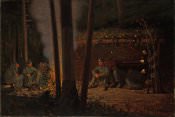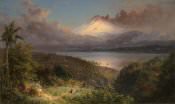Literature and Performing Arts: Edmund Burke publishes a treatise on aesthetics entitled A Philosophical Enquiry into the Origins of the Sublime and Beautiful.
Politics and Society: George III ascends to the throne of Great Britain.
Politics and Society: The French and Indian War (begun 1754) ends with the Treaty of Paris.
Visual Arts: The Royal Academy in London is founded.
Politics and Society: British captain James Cook begins his second voyage around the world.
Politics and Society: The first of three Anglo-Maratha Wars begins (1775–82), fought between the British East India Company and the Maratha Empire in India. The American Revolutionary War begins with fighting breaking out in the American colonies in April.
Politics and Society: A Declaration of Independence is issued by the Second Continental Congress of the American colonies.
Politics and Society: British general Lord Cornwallis surrenders at Yorktown, Virginia. The British negotiate to end military conflict against the American revolutionaries.
Literature and Performing Arts: Immanuel Kant's Critique of Pure Reason is published.
Politics and Society: The Treaty of Paris is signed, ending the American Revolutionary War. American independence is granted.
Visual Arts: Jacques-Louis David paints Oath of the Horatii (Musée du Louvre, Paris).

Politics and Society: Frederick the Great (Frederick II) of Prussia dies in Potsdam; Frederick William I, his nephew, is crowned king of Prussia.
Visual Arts: John Trumbull begins work on his painting The Declaration of Independence (Yale University Art Gallery).
Literature and Performing Arts: Wolfgang Amadeus Mozart composes The Marriage of Figaro.
Literature and Performing Arts: Wolfgang Amadeus Mozart's Don Giovanni premieres.
Politics and Society: George III's illness precipitates the first Regency crisis.
Literature and Performing Arts: Immanuel Kant's Critique of Practical Reason is published.
Politics and Society: George Washington becomes the first president of the United States on April 30. The Estates General meet at Versailles in May to solve France's fiscal crisis. The Third Estate declares itself the National Assembly of France. The French Revolution begins with the storming of the Bastille on July 14.
Politics and Society: Philadelphia is declared the federal capital of the United States. Louis XVI accepts the French constitution.
Literature and Performing Arts: Edmund Burke's Reflections on the Revolution in France and Immanuel Kant's Critique of Judgment are published.
Politics and Society: The Constitution of 1791 establishes France as a constitutional monarchy.
Literature and Performing Arts: Wolfgang Amadeus Mozart's The Magic Flute premieres.
Politics and Society: Holy Roman Emperor Leopold II dies in March; his son Francis II is crowned emperor. The storming of the Tuileries Palace takes place in August. Louis XVI and Marie-Antoinette are imprisoned. The National Assembly declares France a Republic. Trial of Louis XVI begins in December.
Politics and Society: In January, Louis XVI is executed. Reign of Terror begins in September. Marie-Antoinette is executed in October.
Visual Arts: The Musée du Louvre opens in Paris. Jacques-Louis David paints The Death of Marat (Royal Museums of Fine Arts of Belgium). Antonio Canova sculpts Cupid and Psyche (Musée du Louvre, Paris).
Politics and Society: Frederick William II, king of Prussia, dies in Potsdam; his son Frederick William III is crowned king.
Literature and Performing Arts: Samuel Taylor Coleridge writes Kubla Khan (not published until 1816). Friedrich Hölderlin publishes Hyperion. Friedrich Wilhelm Joseph Schelling's Ideas for a Philosophy of Nature is published.
Visual Arts: Aloys Senefelder invents the process of lithography in Munich.
Literature and Performing Arts: William Wordsworth and Samuel Taylor Coleridge write Lyrical Ballads. The German literary and aesthetic journal Athenaeum, founded by the Schlegel brothers as the manifesto of the new Romantic movement, is published in Berlin (until 1800).
Politics and Society: Napoleon Bonaparte becomes First Consul of France; the French Revolution ends.
Visual Arts: Jacques-Louis David paints The Intervention of the Sabine Women (Musée du Louvre, Paris). Francisco de Goya creates an album of eighty etchings, Los caprichos, criticizing contemporary Spanish society.
Politics and Society: Napoleon Bonaparte crosses the Alps by the Saint-Bernard Pass; his army conquers Italy.
Visual Arts: Pierre-Henri de Valenciennes publishes Éléments de perspective pratique.
Literature and Performing Arts: Friedrich Schiller's play Mary Stuart is first performed.
Politics and Society: Slavery is reintroduced in the French colonies.
Visual Arts: Jacques-Louis David paints Napoleon at the Saint-Bernard Pass. Francisco de Goya paints The Clothed Maja and The Naked Maja (both Museo del Prado, Madrid).
Politics and Society: Napoleon Bonaparte becomes Life Consul of France. The Peace of Amiens is signed. A brief period of cross-Channel travel encourages the British to visit Paris.
Visual Arts: John Constable first exhibits at the Royal Academy; Joseph Mallord William Turner makes first trip to Paris en route to the Alps. Frederich André introduces lithography to Paris.
Politics and Society: France and Britain renew the war; widespread fear of a cross-Channel invasion is rekindled. The United States territory is doubled with the purchase of Louisiana from France.
Visual Arts: Lithography is first recognized as an artistic medium with the publication of Philippe André's Specimens of Polyautography in London.

Politics and Society: William Pitt returns as prime minister in Britain. Napoleon Bonaparte declares himself emperor of France. Holy Roman Emperor Francis II founds the Austrian Empire, declares himself emperor of Austria.
Visual Arts: Baron Antoine-Jean Gros exhibits Napoleon Visiting the Plague-Victims of Jaffa (Musée du Louvre, Paris) at the Paris Salon.
Literature and Performing Arts: Ludwig von Beethoven composes Symphony no. 3 in E-flat Major, op. 55 (Sinfonia Eroica).
Politics and Society: The Third Coalition (Britain, Russia, Sweden, and Austria) against France is formed. In December, Napoleon defeats the Austro-Russian army at the Battle of Austerlitz, ending the Third Coalition.
Visual Arts: The British Institution and the Society of Painters in Watercolours are both founded in London.
Literature and Performing Arts: Ludwig von Beethoven writes his only opera, Fidelio, op. 72.
Politics and Society: Holy Roman Emperor Francis II dissolves the Holy Roman Empire on August 6. Maximilian I becomes king of Bavaria. Napoleon establishes the Confederation of the Rhine merging German territories east of the Rhine, with the exception of Prussia and Saxony.
Politics and Society: Napoleon defeats Russia in the Battle of Eylau. Slave trade is abolished in the British colonies.
Visual Arts: Casper David Friedrich paints The Cross in the Mountains, also known as the Tetschen Altar (Gemäldegalerie, Dresden).
Politics and Society: Napoleon proclaims Joseph Bonaparte the king of Spain; the Peninsular War begins. The United States Congress forbids importation of slaves from Africa.
Visual Arts: Jean-Auguste Dominique Ingres paints The Bather, also known as the Bather of Valpinçon (Musée du Louvre, Paris).
Literature and Performing Arts: Johann Wolfgang von Goethe publishes Faust, Part I.
Politics and Society: Pope Pius VII excommunicates Napoleon.
Visual Arts: William Blake organizes his own retrospective in London.
Literature and Performing Arts: A. W. Schlegel publishes Lectures on Dramatic Art and Literature, 3 vols., 1809–11. Ludwig von Beethoven composes the Emperor Concerto.
Visual Arts: Caspar David Friedrich completes The Monk by the Sea and The Abbey in the Oakwood (both Alte Nationalgalerie, Berlin). Four of the Lukasbund artists move to Rome, where they take up residence in the monastery of San Isadoro and become known as the Nazarenes. Johann Wolfgang von Goethe publishes Theory of Colors.
Literature and Performing Arts: Mme de Staël publishes Germany.
Politics and Society: George IV, prince of Wales, is made prince regent. The Mamelukes are massacred in Cairo.
Literature and Performing Arts: Jane Austen's first novel, Sense and Sensibility, is published.
Politics and Society: The United States declares war on Britain (War of 1812). Napoleon invades Russia, enters Moscow, but later retreats after considerable losses.
Visual Arts: Théodore Géricault and Ary Scheffer first appear at the Paris Salon. Géricault paints The Charging Chasseur (Musée du Louvre, Paris).
Literature and Performing Arts: The Brothers Grimm's Fairy Tales is first published.
Politics and Society: Spain is liberated from the French. Napoleon is defeated at the Battle of Leipzig.
Literature and Performing Arts: Lord Byron's The Bride of Abydos and The Giaour are published. Jane Austen's Pride and Prejudice is published.
Politics and Society: Napoleon abdicates and is exiled to Elba, Italy; Bourbon monarchy is restored. Louis XVIII takes power in Paris. The Congress of Vienna begins. The Peninsular War in Spain ends, and Ferdinand VII ascends to the throne.
Visual Arts: David Cox's Treatise on Landscape Painting and Effect in Water Colours is published. Théodore Géricault paints The Wounded Cuirassier (Musée du Louvre, Paris). Francisco de Goya paints The Second of May, 1808, and The Third of May, 1808 (both Museo del Prado, Madrid).
Politics and Society: Britain defeats France at the "Hundred Days" Battle of Waterloo; the Congress of Vienna marks the final defeat of Napoleon, who is exiled to Saint Helena. The Second Restoration and the White Terror occur in France; the Second Treaty of Paris is signed.
Politics and Society: The first parliamentary elections are held in France. The French navy frigate Medusa is shipwrecked.
Visual Arts: The Elgin marbles are purchased for the British Museum, London. Charles de Lasteyrie and Godefroy Engelmann open lithographic print shops in Paris.
Literature and Performing Arts: Gioacchino Rossini's The Barber of Seville premieres.
Politics and Society: Mme de Staël’s Thoughts on the Main Events of the French Revolution is published.
Visual Arts: The Museo del Prado, Madrid, is founded. Caspar David Friedrich paints The Wanderer above the Sea of Fog (Kunsthalle Hamburg).
Literature and Performing Arts: John Keats's poem Endymion is published. Arthur Schopenhauer writes The World as Will and Representation.
Politics and Society: Victoria, later queen of England, is born.
Visual Arts: Théodore Géricault exhibits The Raft of the Medusa (Musée du Louvre, Paris) at the Paris Salon; John Constable exhibits his first "six-footer," The White Horse. Joseph Mallord William Turner visits Italy.
Literature and Performing Arts: Lord Byron's poem Mazeppa is published.

Politics and Society: George IV accedes to the British throne after George III dies.
Visual Arts: Francisco de Goya completes his Disasters of War. Thomas Lawrence is elected president of the Royal Academy following the death of Benjamin West. Théodore Géricault exhibits The Raft of the Medusa (Musée du Louvre, Paris) in London. Richard Parkes Bonington meets Eugène Delacroix while copying works of art in the Musée du Louvre, Paris.
Politics and Society: Napoleon dies on the island of Saint Helena. The Greek War of Independence from the Ottoman Turks begins. George IV of England is coronated.
Visual Arts: Théodore Géricault spends most of the year in London. He publishes a series of twelve lithographs, Various Subjects Drawn from the Life and on Stone (familiarly known as The English Series).
Politics and Society: Greece declares independence.
Visual Arts: Richard Parkes Bonington and Eugène Delacroix make their first Salon appearances, at which Delacroix exhibits The Barque of Dante (Musée du Louvre, Paris).
Literature and Performing Arts: Franz Schubert composes Symphony no. 8 in B Minor, known as the "Unfinished."
Literature and Performing Arts: Albert Stapfer writes the first French translation of Goethe's Faust, Part I. Franz Schubert composes Fantasy in C Major for Piano, known as the "Wanderer." Byron sails to Greece to participate in the Greek Revolution.
Politics and Society: Louis XVIII dies and Charles X becomes king of France.
Visual Arts: The National Gallery, London, is founded. Eugène Delacroix paints The Massacre at Chios (Musée du Louvre, Paris). Constable exhibits at the British Salon in Paris and is awarded a gold medal, along with Richard Parkes Bonington and Copley Fielding.
Literature and Performing Arts: Ludwig van Beethoven composes Symphony no. 9 in D Minor, op. 125. Lord Byron dies in Missolonghi.
Visual Arts: Richard Parkes Bonington shares a studio with Eugène Delacroix. John Martin paints The Deluge (Yale Center for British Art). Ary Scheffer's Retreat of Napoleon's Army from Russia (Yale University Art Gallery) and Richard Parkes Bonington’s Seated Turk (Yale Center for British Art) are shown at the Galerie Lebrun in Paris, in an exhibition organized to support the Greeks in their War of Independence from the Ottoman Empire.
Politics and Society: The Treaty of London declares Greek independence from the Ottoman Empire.
Visual Arts: Eugène Delacroix paints The Death of Sardanapalus (Musée du Louvre, Paris). The first successful production of Shakespeare in France takes place at the Théâtre-Français in Paris.
Literature and Performing Arts: Franz Schubert composes Winterreise.
Politics and Society: The Duke of Wellington becomes prime minister of England.
Visual Arts: Eugène Delacroix's first London exhibition is at the British Institution. Richard Parkes Bonington exhibits for the last time in London and Paris.
Visual Arts: Richard Parkes Bonington's Seated Turk (Yale Center for British Art) is exhibited at the British Institution and is purchased by Sir Thomas Lawrence.
Politics and Society: The July Revolution occurs in Paris; Charles X is overthrown and "Citizen King" Louis-Philippe is declared constitutional monarch. The French colonization of North Africa begins with the conquest of Algiers. In England, George IV dies and the reign of William IV begins.
Visual Arts: Eugène Delacroix paints Liberty Leading the People (Musée du Louvre, Paris). The Altes Museum opens in Berlin.
Literature and Performing Arts: Victor Hugo's Notre-Dame of Paris and Honoré de Balzac's Fatal Skin are published. Frédéric Chopin settles in Paris. Charles Darwin sails on the HMS Beagle for a scientific survey of South America, New Zealand, and Australia.
Visual Arts: Eugène Delacroix accompanies a French delegation to Morocco led by the Comte de Mornay.
Politics and Society: Slavery in the British Empire (including colonies) is abolished.
Literature and Performing Arts: Alexander Pushkin's novel in verse, Eugene Onegin, is published.

Politics and Society: Great revolts in Paris and Lyon signal climax of the radical movement in France; anti-association laws are passed.
Visual Arts: Paul Delaroche exhibits The Execution of Lady Jane Grey (National Gallery, London) at the Paris Salon.
Literature and Performing Arts: Robert Schumann publishes the journal Neue Lepiziger Zeitschrift für Musik. Frédréric Chopin publishes Mazurkas, op. 17.
Politics and Society: A law restricting the freedom of press is passed in France.
Visual Arts: John Martin exhibits The Deluge (Yale Center for British Art) at the Paris Salon and is awarded a gold medal.
Literature and Performing Arts: Gaetano Donizetti's tragic opera Lucia di Lammermoor premieres in Naples.
Politics and Society: William IV dies and Queen Victoria accedes to the British throne.

Literature and Performing Arts: Charles Dickens's second novel, Oliver Twist, is published.
Visual Arts: Louis-Jacques-Mandé Daguerre goes public with his invention of the daguerreotype photography process.
Politics and Society: Frederick William III dies in Potsdam; his son Frederick William IV, "The Romantic on the Throne," becomes king of Prussia.
Visual Arts: John Frederick Lewis settles in Cairo, where he spends the next ten years, returning to London in 1851 with a body of work from which he draws inspiration for the rest of his life.
Visual Arts: Pierre-Jean David d'Angers sculpts a bust of Victor Hugo (Musée d'Angers, France).
Literature and Performing Arts: Felix Mendelssohn composes his second piece of music (incidental music, op. 61) for William Shakespeare's A Midsummer Night's Dream, which includes the renowned Wedding March.
Literature and Performing Arts: Charles Dickens's novella A Christmas Carol is published.
Politics and Society: Samuel F. B. Morse demonstrates the "electric telegraph."
Visual Arts: Joseph Mallord William Turner exhibits Rain, Steam, and Speed—The Great Western Railway (National Gallery, London) at the Royal Academy, London.
Literature and Performing Arts: Alexandre Dumas's The Three Musketeers is published (in serial form, March–July).
Politics and Society: Friedrich Engels's first book, The Condition of the Working Class in England, is published in German (English translation published in 1887).
Literature and Performing Arts: Edgar Allen Poe's The Raven and Other Poems is published. Richard Wagner's opera Tannhäuser premieres in Dresden.
Politics and Society: The United States declares war on Mexico.
Literature and Performing Arts: Herman Melville's first novel, Typee: A Peep at Polynesian Life During a Four Months' Residence in a Valley of the Marquesas, is published.
Literature and Performing Arts: Charlotte Brontë's Jane Eyre is published. Emily Brontë's Wuthering Heights is published.
Politics and Society: Karl Marx and Friedrich Engels’s The Communist Manifesto is published. Revolutions take place across Europe. The Second Republic in France is established; Louis Napoleon is elected president. Elizabeth Cady Stanton joins in convening the first women's rights meeting in America. Maximilian II becomes king of Bavaria. Francis Joseph I becomes emperor of Austria.
Visual Arts: The Pre-Raphaelite Brotherhood is formed in England.
Visual Arts: Gustave Courbet exhibits The Stone Breakers (destroyed during World War II) at the Paris Salon.
Literature and Performing Arts: Nathaniel Hawthorne's The Scarlet Letter is published.

Politics and Society: The Great Exhibition (the first World's Fair) opens at the Crystal Palace, London. Louis-Napoleon organizes a coup d'etat; the Second Republic in France falls.
Literature and Performing Arts: Herman Melville's Moby Dick is published.
Politics and Society: Louis-Napoleon (now Napoleon III) establishes the Second Empire in France.
Literature and Performing Arts: Harriet Beecher Stowe's Uncle Tom's Cabin is published.
Politics and Society: The Crimean War begins (1853–1856).
Visual Arts: Eugène Emmanuel Viollet-le-Duc's Complete Dictionary of French Architecture (Dictionnaire raisonné), vol. 1, is published.
Literature and Performing Arts: Henry David Thoreau's Walden is published.
Visual Arts: Gustave Courbet’s The Painter's Studio (Musée d'Orsay, Paris) is exhibited at Pavilion of Realism at the Paris Universal Exposition.
Literature and Performing Arts: Robert Browning publishes a two-volume collection of poetry, Men and Women.
Politics and Society: The Crimean War ends when the Russians capitulate to Austria; a peace conference takes place in Paris. Alexis de Tocqueville's The Old Regime and the Revolution is published.
Visual Arts: The National Portrait Gallery, London, opens.
Literature and Performing Arts: Gustave Flaubert's first novel, Madame Bovary, is published.
Politics and Society: The Dred Scott decision upholds de jure slavery in the United States.
Visual Arts: The Museum of Ornamental Art (now the Victoria and Albert Museum) opens in London. Jean-François Millet completes The Gleaners (Musée d'Orsay, Paris).
Literature and Performing Arts: The Flowers of Evil, a volume of poetry by Charles Baudelaire, is published.
Literature and Performing Arts: Charles Darwin's On the Origin of Species is published. Richard Wagner completes Tristan und Isolde.
Politics and Society: The United States Civil War commences. Frederick William IV, "The Romantic on the Throne," dies in Potsdam; his brother William I becomes king of Prussia.

Visual Arts: The Salon des Refusés ("exhibition of rejects" by the jury of the Paris Salon) opens.

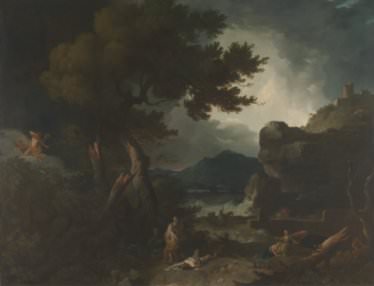
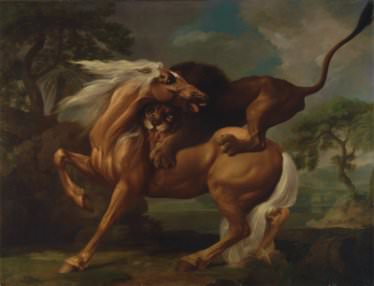
![William Hodges, A View of Matavai Bay in the Island of Otaheite [Tahiti], 1776. Oil on canvas. Yale Center for British Art, Paul Mellon Collection William Hodges, A View of Matavai Bay in the Island of Otaheite [Tahiti]](https://interactive.britishart.yale.edu/sites/default/files/styles/ycba_timeline/public/Hodges_Tahitian%20War%20Galleys.jpg?itok=CAKu53U4)
